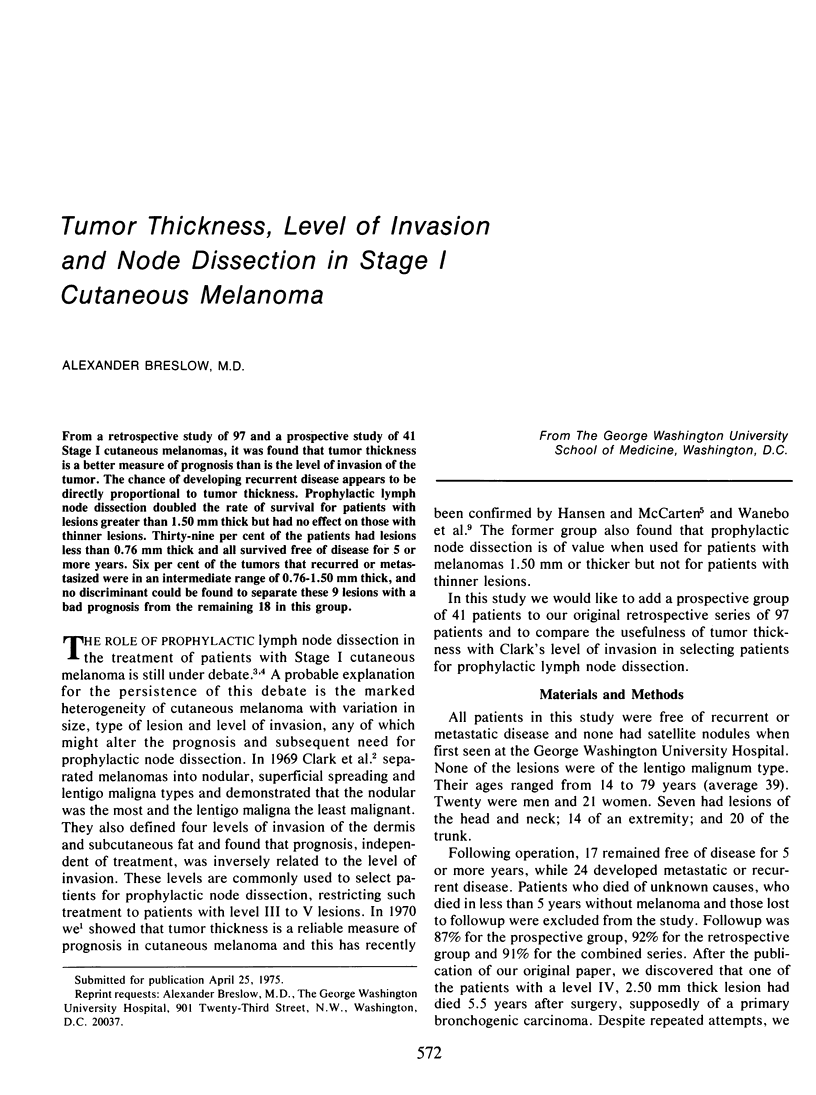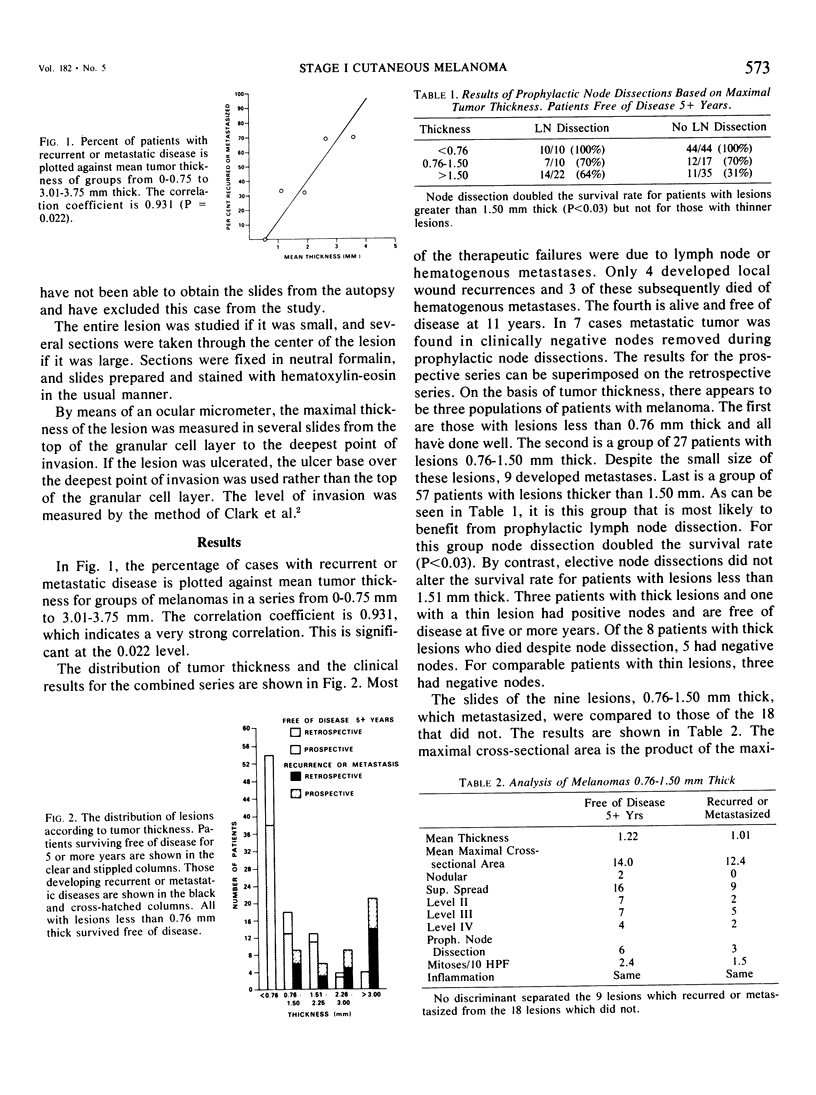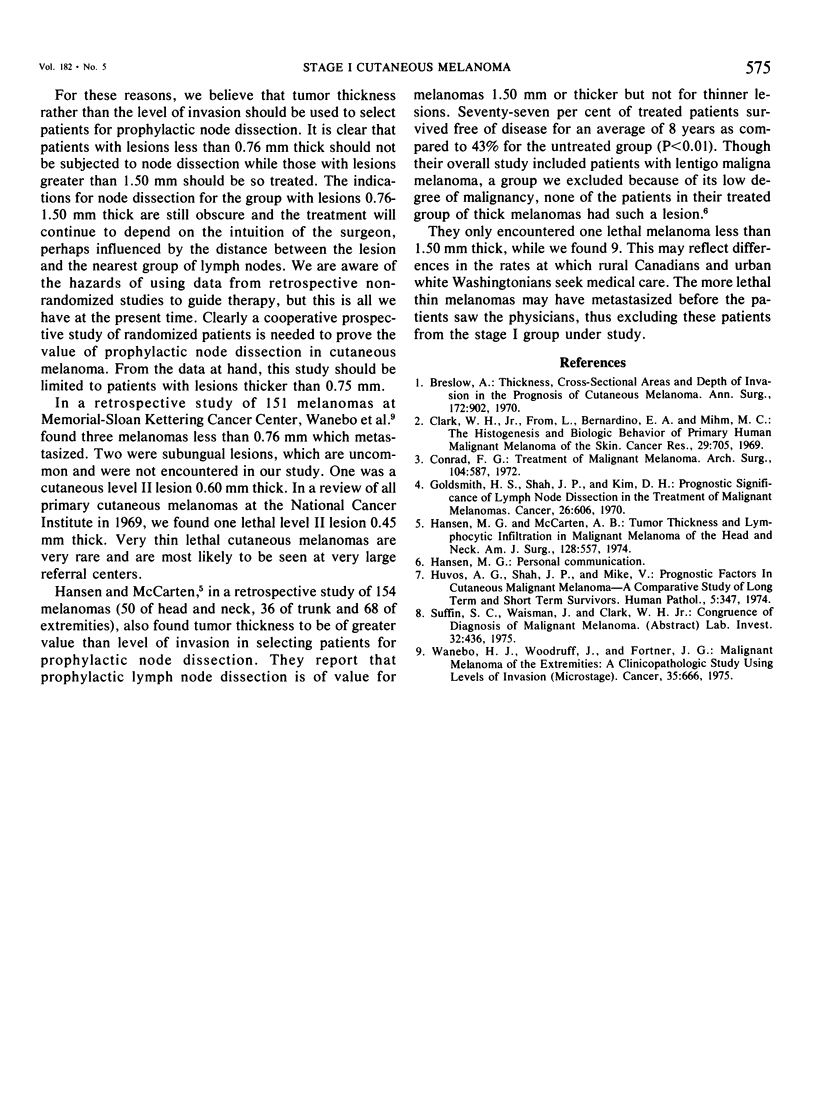Abstract
From a retrospective study of 97 and a prospective study of 41 Stage I cutaneous melanomas, it was found that tumor thickness is a better measure of prognosis than is the level of invasion of the tumor. The chance of developing recurrent disease appears to be directly proportional to tumor thickness. Prophylactic lymph node dissection doubled the rate of survival for patients with lesions greater than 1.50 mm thick but had no effect on those with thinner lesions. Thirty-nine per cent of the patients had lesions less than 0.76 mm thick and all survived free of disease for 5 or more years. Six per cent of the tumors that recurred or metastasized were in an intermediate range of 0.76-1.50 mm thick, and no discriminant could be found to separate these 9 lesions with a bad prognosis from the remaining 18 in this group.
Full text
PDF



Selected References
These references are in PubMed. This may not be the complete list of references from this article.
- Breslow A. Thickness, cross-sectional areas and depth of invasion in the prognosis of cutaneous melanoma. Ann Surg. 1970 Nov;172(5):902–908. doi: 10.1097/00000658-197011000-00017. [DOI] [PMC free article] [PubMed] [Google Scholar]
- Clark W. H., Jr, From L., Bernardino E. A., Mihm M. C. The histogenesis and biologic behavior of primary human malignant melanomas of the skin. Cancer Res. 1969 Mar;29(3):705–727. [PubMed] [Google Scholar]
- Conrad F. G. Treatment of malignant melanoma: wide excision alone vs lymphadenectomy. Arch Surg. 1972 Apr;104(4):587–593. doi: 10.1001/archsurg.1972.04180040201034. [DOI] [PubMed] [Google Scholar]
- Goldsmith H. S., Shah J. P., Kim D. H. Prognostic significance of lymph node dissection in the treatment of malignant melanoma. Cancer. 1970 Sep;26(3):606–609. doi: 10.1002/1097-0142(197009)26:3<606::aid-cncr2820260317>3.0.co;2-m. [DOI] [PubMed] [Google Scholar]
- Hansen M. G., McCarten A. B. Tumor thickness and lymphocytic infiltration in malignant melanoma of the head and neck. Am J Surg. 1974 Oct;128(4):557–561. doi: 10.1016/0002-9610(74)90275-x. [DOI] [PubMed] [Google Scholar]
- Huvos A. G., Shah A. P., Miké V. Prognostic factors in cutaneous malignant melanoma. A comparative study of long term and short term survivors. Hum Pathol. 1974 May;5(3):347–357. doi: 10.1016/s0046-8177(74)80117-6. [DOI] [PubMed] [Google Scholar]
- Wanebo H. J., Woodruff J., Fortner J. G. Malignant melanoma of the extremities: a clinicopathologic study using levels of invasion (microstage). Cancer. 1975 Mar;35(3):666–676. doi: 10.1002/1097-0142(197503)35:3<666::aid-cncr2820350320>3.0.co;2-4. [DOI] [PubMed] [Google Scholar]


